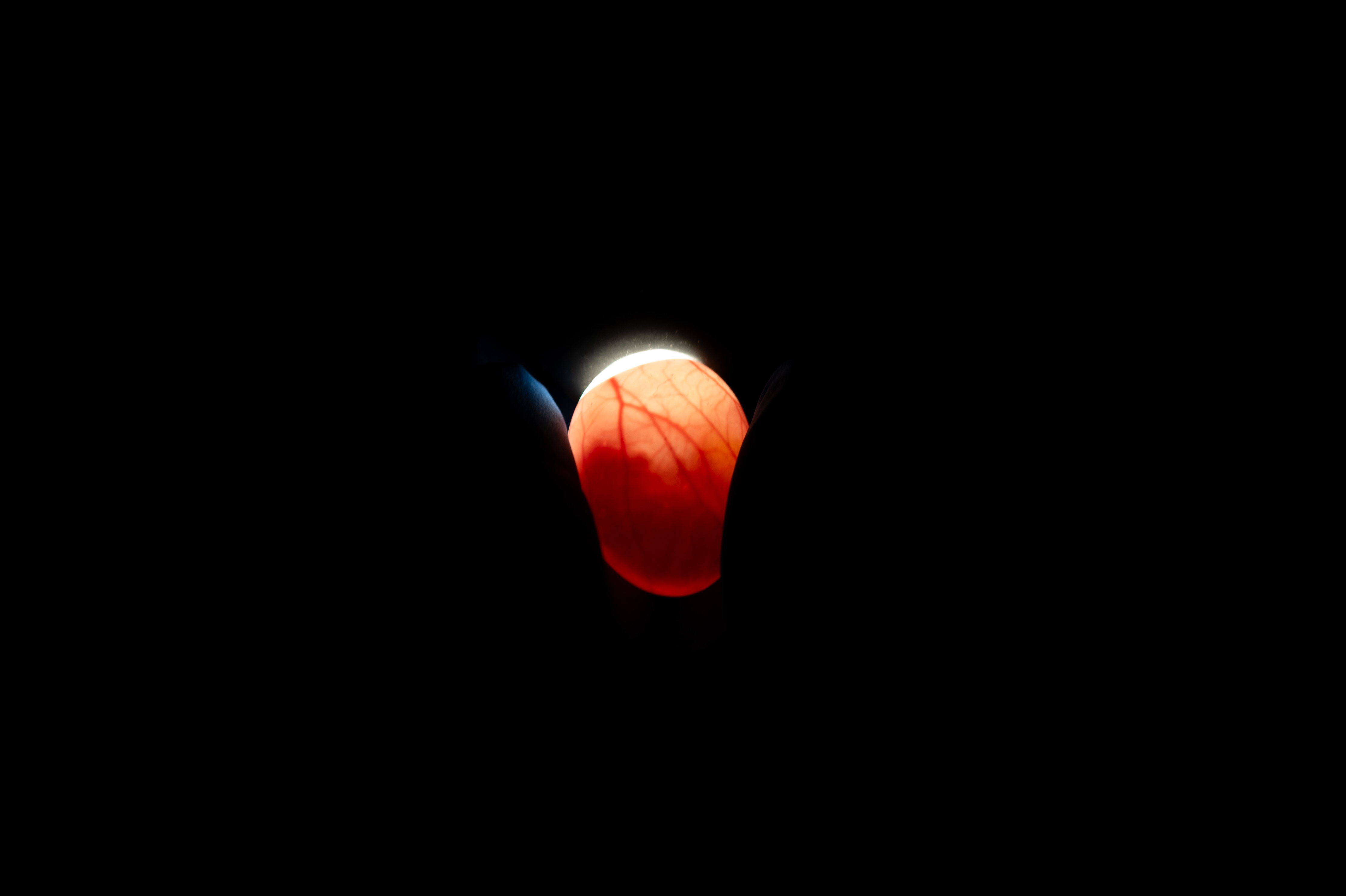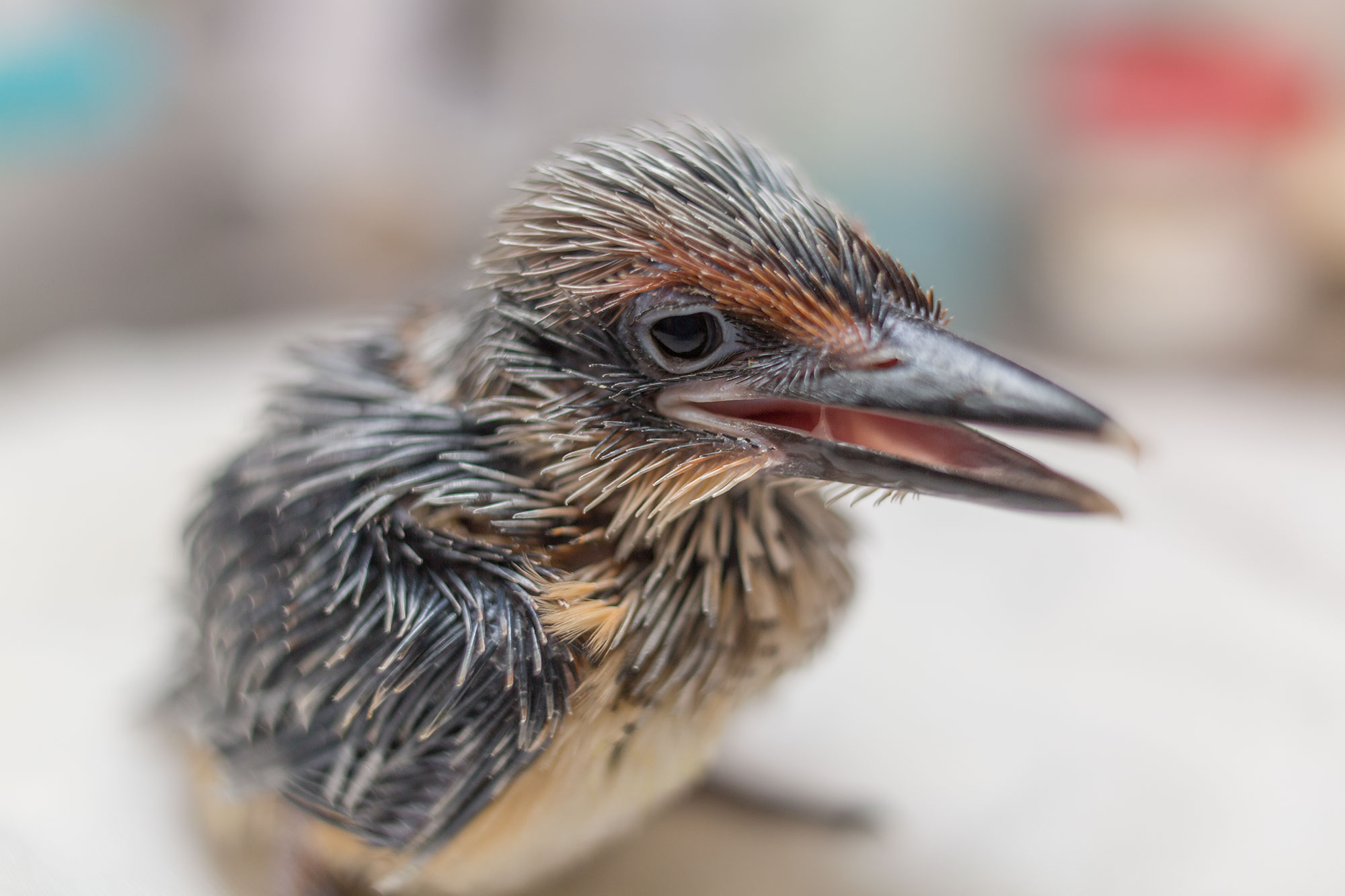How Zoo Scientists Are Helping Resettle Extinct-In-The-Wild Siheks on a Remote Island
The lush forests of Guam were once alive with the calls of the sihek (SEE-heck), or Guam kingfisher— a striking bird with cobalt and cinnamon plumage. But in 1988, the sihek was declared extinct in the wild after invasive predators devastated the island’s bird populations.
For over four decades, the Smithsonian has played a central role in researching, breeding and maintaining a small captive population of these magnificent and colorful birds. Last year, Smithsonian biologists pivoted towards a bold new phase in sihek conservation: supporting a project to resettle the birds to a protected island refuge in the Pacific.
One year later, the new project has taken flight— and a remarkable recovery may be unfolding.
How the Smithsonian is helping an extinct-in-the-wild species
Erica Royer, an aviculturist at the Smithsonian’s National Zoo and Conservation Biology Institute, is one of the world's leading experts on sihek care and breeding. She manages a small group of the birds at the Zoo’s conservation campus in Front Royal, Virginia.
Inside her laboratory workspace, Royer “candles” a sihek egg, holding a light up to the shell to check on the health of the embryo.

Royer holds a light up to a sihek egg to check on the health of the embryo. (Smithsonian/ Roshan Patel)
Later this spring, Royer will head to a secure quarantine facility at the Sedgwick County Zoo in Wichita, Kansas, where she’ll play a key role in the sihek recovery project: coordinating the transfer of a valuable cache of eggs as the arrive from the Smithsonian and partner zoos around the United States.
Royer will work alongside project biologists in the specialized biosecurity unit — made from a modified shipping container — as the team spends two months hatching the eggs and then hand-raising the tiny chicks until they are large enough to fend for themselves.
From there, the chicks will be flown to Palmyra Atoll, a remote chain of islets roughly 1,000 miles south of Hawaii.
“Last year, we hand-reared and released five males and four females,” said Royer. “This year, we’re aiming to release another nine birds — hopefully with a higher ratio of females.”
A male sihek (left) and a female (right) perch on a branch at Palmyra Atoll. (Martin Kastner/TNC&ZSL)
The hope is that by translocating sihek into a new wild habitat, the birds will breed and increase their population. At the same time, researchers will be able to study the animals and gain a better understanding of the species’ habits and behaviors in the wild. And the right data could bring project leaders one step closer to the eventual reintroduction of the birds to Guam.
After a month of acclimation in outdoor aviaries, the chicks will be outfitted with tiny radio transmitters and released into the wild. Biologists hope they’ll settle in with the small group of sihek released last year—boosting the numbers of the first wild population of sihek to exist in nearly 40 years.
“We also hope to see the first wild sihek chicks in at least 37 years,” she added. “That would be a groundbreaking moment for the species.”

A newly-hatched sihek chick at the Smithsonian’s Conservation Biology Institute in 2018. (Smithsonian/Roshan Patel)
A brief history of Guam’s native birds
To understand why Palmyra came to be the new home for the sihek, it’s important to understand what happened to the birds in their old habitat.
Today, the lush forests of Guam are now hauntingly quiet. But half a century ago, they echoed with a chorus of bird songs—among the loudest were the booming rasps of the sihek, as the species is known by the indigenous CHamoru people.
Known for their vibrant colors and large bills, sihek use their large bills to hunt small prey, defend their territories from other birds, and excavate nests from the cavities of soft, decaying coconut trees.
Sihek excavate nests in the trunks of soft or rotten trees. (Martin Kastner/TNC&ZSL)
The turning point came to Guam sometime around World War II, when brown tree snakes were introduced to the island, likely after hitching a ride on military transports or cargo ships. Fueled by an available food supply that lacked natural defenses, the snake population exploded, wiping out 10 native bird species in just a few decades.
Fortunately, conservationists intervened in time to save the sihek. By 1988, the last remaining 29 wild sihek had been captured and brought into human care.
Although the species was saved from permanent extinction, scientists still had much to learn about caring for the secretive birds. “There are so many things that are not well studied in this species, mainly because there were so few birds left by the time biologists were attempting to record their behavior,” said Royer.
The birds can be a challenge to maintain in human care, explained Royer. They breed slowly, require lots of space, and their carnivorous diet—which includes lizards, mice and insects—can be difficult to provide in captivity.
A young sihek at the Smithsonian’s National Zoo and Conservation Biology Institute. (Smithsonian/Erica Royer)
Today, only about 130 sihek are spread across 25 zoos and conservation centers in Guam and the United States mainland. The Palmyra population is the product of this cooperative breeding program, which is managed by the Association of Zoos and Aquariums.
Still, the population’s future is fragile. At current reproductive rates, conservation biologists believe the population could collapse within just a few decades.
“If we don’t find a way to increase the population, our models suggest the species could face extinction again,” said Royer.
Moving to an island preserve
With Guam’s snake problem still unabated, Sihek Recovery Project leaders began searching for a temporary new home for the birds—a place where they could safely rebuild a population.
Palmyra Atoll. Biologists hope to increase the population of sihek in Palmyra to about 20 breeding pairs. (Smithsonian/Erica Royer)
Palmyra Atoll, a remote and pristine preserve co-managed by The Nature Conservancy and the U.S. Fish and Wildlife Service, checked every box. It’s free of invasive predators, teeming with natural prey, and is located within a vast swath of ocean legally protected the U.S. Fish and Wildlife Service’s Palmyra Atoll National Wildlife Refuge and the Pacific Remote Islands Marine National Monument.
From the biosecurity unit to the island
As Royer prepares the next batch of chicks for their cross-Pacific journey, biologists are making promising new discoveries in the birds’ new home.
A field technician sets up a camera trap to capture the release of sihek at Palmyra Atoll. (Smithsonian/Erica Royer)
Among the most exciting was the discovery of a clutch of eggs laid in April. Although sihek breeding usually takes a few attempts to be successful, the news is cause for optimism.
The released birds appear to be thriving: they’ve staked out territories, gained weight, and some have formed breeding pairs. In a surprising twist, the sihek were seen hunting and eating hermit crabs—a behavior that had not been observed in human care.
“The fact that all of them are still alive is a testament to how well-suited this environment is for them. They are thriving even better then we could have ever imagined they could,” said Royer. “It shows that with all of the right preparations, this process can work.”
The core partners of Sihek Recovery Project are Guam Department of Aquatic and Wildlife Resources, U.S. Fish and Wildlife Service, Zoological Society of London, and The Nature Conservancy. Other partners include the Smithsonian’s National Zoo and Conservation Biology Institute, Sedgwick County Zoo in OklahomaKansas, and several other partners coordinated by the Association of Zoos and Aquariums.
